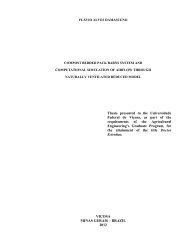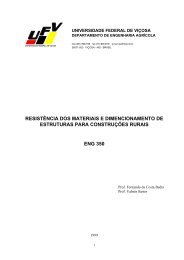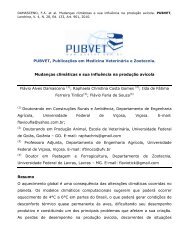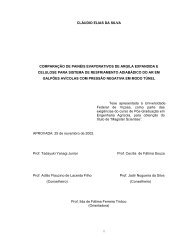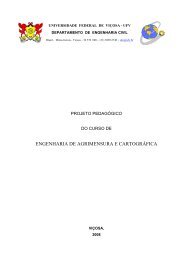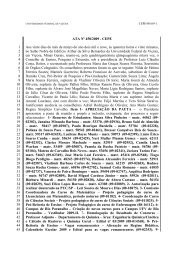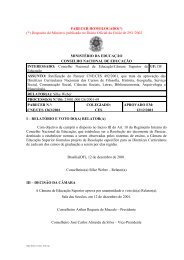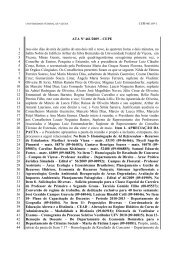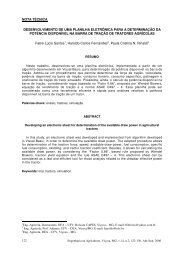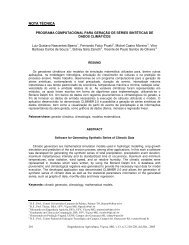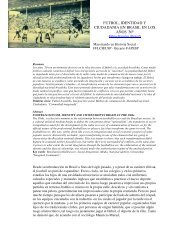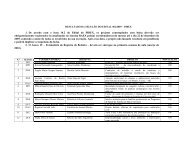ALKALOID BIOSYNTHESIS IN PLANTS: Biochemistry, Cell ... - UFV
ALKALOID BIOSYNTHESIS IN PLANTS: Biochemistry, Cell ... - UFV
ALKALOID BIOSYNTHESIS IN PLANTS: Biochemistry, Cell ... - UFV
You also want an ePaper? Increase the reach of your titles
YUMPU automatically turns print PDFs into web optimized ePapers that Google loves.
34 FACCH<strong>IN</strong>I<br />
Figure 1 Reactions catalyzed by enzymes involved in monoterpenoid indole alkaloid<br />
biosynthesis for which the corresponding genes have been cloned. TDC, tryptophan decarboxylase;<br />
STR, strictosidine synthase; SGD, strictosidine β-D-glucosidase; T16H, tabersonine<br />
16-hydroxylase; D4H, desacetoxyvindoline 4-hydroxylase; DAT, deacetylvindoline<br />
4-O-acetyltransferase.<br />
Tryptamine and secologanin are condensed by strictosidine synthase (STR) to<br />
form strictosidine, the common precursor to all TIAs (Figure 1). STR cDNAs have<br />
been isolated from Rauvolfia serpentina (84) and C. roseus (104, 132). The enzyme<br />
is encoded by a single gene in C. roseus, indicating that the multiple STR isoforms<br />
reported previously result from posttranslational modification of a single precursor<br />
(132). Strictosidine is deglucosylated by strictosidine β-D-glucosidase (SGD),<br />
which has been purified from C. roseus cell cultures (92). The native enzyme<br />
exhibits a high molecular mass, suggesting that it exists as an aggregate composed<br />
of multiple 63-kDa subunits. Digestion of SGD with trypsin causes the complex to<br />
disintegrate, solubilizing the enzyme without loss of activity. SGD is encoded by a<br />
single gene in C. roseus that shares ∼60% homology with other plant glucosidases<br />
(55). Deglucosylated strictosidine is converted via several unstable intermediates<br />
to 4,21-dehydrogeissoschizine. Although several TIAs are produced from 4,21dehydrogeissoschizine,<br />
few of the enzymes involved have been isolated (108).<br />
For example, none of the enzymes leading to catharanthine has been described.



